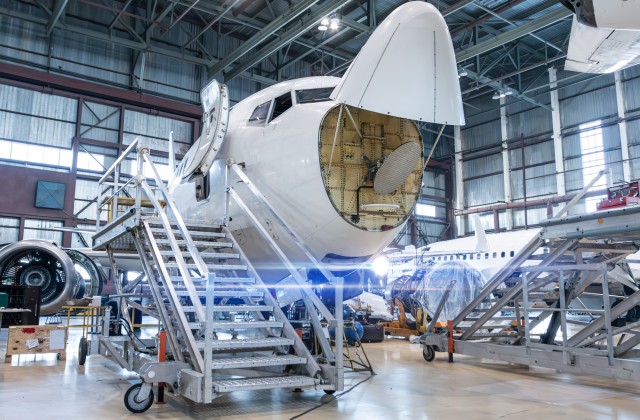In a few weeks, some of us will be gathering, virtually or in person, to celebrate the new year – although “celebrate” might be too positive a term. Fretting about the future is a global preoccupation at the moment, and supply chain disruption has often played a supporting role in our collective concern. But here’s our bold prediction for the future: All of that will change in 2022, and supply chains will reach a turning point with tremendous potential for innovation.
What will that innovation look like? And how can supply chain planners seize the day, no matter what it brings? To help us imagine that future, we asked some of our partners to share their predictions and recommendations for 2022. Their responses contain powerful, actionable advice to lead you into the new year.
Vinder Sodhi, Partner, Supply Chain and Network Operations, Deloitte
Akhil Sukhija, Manager, Supply Chain and Network Operations, Deloitte
COVID-19 has accelerated the evolution of the supply chain. Leading organizations have used this disruption as an opportunity to innovate, creating new models to not only react, but to leverage supply chains as a competitive advantage. Four trends have emerged:
- Supply chains are part of the customer experience: COVID-19 has accelerated the “anytime, anywhere” omnichannel shopping experience. A company’s fulfillment promise now influences consumer experience - same day delivery, on-demand personalization and hassle-free returns. This shift will force companies to invest to better understand their customers using advanced market sensing and predictive analytics, increase collaboration between ecosystem partners and invest in automation to improve responsiveness to rapidly changing demands.
- Improve resilience and agility: Existing supply chains were highly optimized for meeting service levels at the lowest cost. The pandemic has resulted in extreme volatility in demand and supply, and companies must shift to build more resilience and agility across the value chain. Resilience will require enhancing end to end visibility (your customers’ customers, and your suppliers’ suppliers) and building buffers in inventory, and production and logistics capacity. Agility will require higher collaboration with customers and suppliers, seamless integration of process and information, and increased speed to market with new offerings.
- Enable the future of work in supply chain and operations: The pandemic proved to many of us that remote work is not only possible but effective, both in the office and on the shop floor or warehouse. In the office, this will require Integrated Business Planning technology that enables collaborative and concurrent planning processes across Supply Chain, Commercial and Finance. In operations, Smart Factories and Smart Warehouses will drive investment in robotics, process automation, AI and AR/VR to improve productivity, safety and employee experience.
- Sustainability is a driver for supply chain strategy: Sustainability spans three key pillars: Environmental, Social and Governance (ESG). With net-zero commitments being adopted by business and countries, supply chains will need to deliver impact on all three dimensions to make businesses competitive and mitigate external risks. Logistics will switch to alternatives like zero emission fleets to reduce GHG emissions. Procurement will drive responsible sourcing by laying more importance on transparency and traceability from vendors. Operations will prefer green manufacturing and warehousing solutions to deliver a positive impact on climate and society.
Scott Spyker, President and CEO, Scott Sheldon LLC
In 1347, a pandemic known as the “Black Death” arrived at the port of Messina, Italy. Over the next five years, the pandemic traveled the European supply chain, killed 1/3 of Europe’s population, destroyed the Medieval feudal economy, and gave rise to the Renaissance city-state.
In 2021, supply chain and pandemic are once again reunited. From The Great Christmas Toy Shortage of 2021 to the Ever Given grounding, the words “supply chain” are ever present in national and international conversation. New daily material shortages, port delays, price increases, and labor uncertainty all continue to plague supply chain professionals already burnt out from the previous day’s, month’s, year’s firefighting.
Not all news is bad news. Workers are attempting to wrest power from employers though WFH initiatives. Companies like Boeing, Benneton, and Inditex are seeking to mitigate off-shore risk and disruption by near-shoring select operations. And the US government is making a strategic $52B investment in domestic microchip production. Old paradigms are being dismantled as the world rethinks supply chain.
If history is any guide, COVID-19 will continue to disrupt the world’s supply chain into the near future. Scott Sheldon sees the following:
- Q1/Q2
- Companies continue to react to myriad shortages.
- Q2/Q3
- Companies increase inventory and ramp up production as shipping containers are repositioned globally.
- Companies invest in supply chain visibility solutions.
- Q3/Q4
- Companies begin to think more strategically about overall network footprint and design.
- Companies identify structural weaknesses and implement leading technologies such as machine learning, warehouse automation, augmented reality, gamification, etc. to offset labor impacts and focus on future-state needs.
- Companies invest in capabilities to offset labor challenges and improve solutions focused on planning and visibility.
Don’t let this crisis go to waste. Use the pandemic to spark a supply chain renaissance in your company.
Deepak Mavatoor, Managing Partner – Growth and Transformation, Head – Supply Chain and Plant Operations; Manufacturing, Auto and Industrial; Tata Consultancy Services
A supply chain without disruptions is not a supply chain! While COVID’s impact on supply chain – up and down demand, resource shortages, etc., - is unprecedented, let me restate what all practitioners know: Supply chain disruptions are here to stay beyond COVID. So, it’s imperative for supply chain leaders to do better for the future in terms of readiness. What could those actions be?
1. Build agility not rigidity: Segmentation of supply chain strategy - to introduce agility and velocity for the right business level decision making - is the single important step that leaders have to embrace to be ready for the future. Many organizations are still fans of a single, global supply chain strategy, which, while introducing uniformity (I prefer to call it rigidity), takes away the agility needed for product- and/or business unit-specific supply chain actions.
2. It’s not “resiliency OR efficiency” but “resiliency AND efficiency”: Stop looking at supply chain as a cost bucket. Challenge the successful but legacy supply chain principles of lean – which are usually applied with the single overriding objective of squeezing costs - that may have inadvertently made value chains brittle and hence not resilient to accommodate today’s global supply chain characteristics. Thinking of resiliency and efficiency as mutually exclusive concepts is a myth. Identifying the most brittle elements of supply chain within every organization and then applying an element of cushion to increase resiliency would help organizations manage disruptions better.
3. Invest in ecosystem: Any organization’s supply chain strength is directly related to the weakest supplier in the network. So, it’s imperative for leaders to invest in a collaborative ecosystem, enabled by digital technology, to create a level playing field and improve trust deficits between all tiers of supply chain. There is a general unwritten consensus that companies that invested in end-to-end collaborative processes and relationships did better during the pandemic than those who did not.
Klaus Imping, Partner and CEO, mSE Solutions
I expect to see an increasing emphasis on supply chain predictability at the C-level in most companies, coupled with a willingness to invest in systems and people to better handle disruption. There’ll be a shift from lean to agile supply chain operations so that the supply network is optimized for efficiency as well as responsiveness. This will go together with a drive towards more efficient and more effective business processes, which will be supported by interoperable technology. The supply chain winners of these crises will be able to collaborate across the internal and external silos. There will be greater use of sensing technologies to better predict and integrate disruptive macro events into supply chain planning. Company accounts may have specific supply chain risk assessments undertaken by independent auditors.
Will we see the end of the bullwhip effect? I doubt it…
But we will likely see a fundamentally changed business landscape in the future. The supply chain disruptions of 2020 have continued to disrupt seasonal business upsides. This will create cash flow challenges for producers and retailers. The inflationary pressure induced by these challenges and macro-economic policy decisions will have a profound impact on consumer preferences. The winners will be able to recognize the signals for impending disruptions, pro-actively mitigate these before they occur, and take advantage of the business upsides to overtake their competition.
John Sharkey, Chief Operating Officer, Spinnaker SCA
The #1 question (by far) that we got asked by clients in 2020 and 2021 was “How can we manage customer-level allocations of constrained supply?” The answer to this question lies in both better planning and better integration of planning and order fulfillment processes, systems, and business rules.
Historically, we’ve worked with some companies (i.e., manufacturers in capital-intensive industries) that are used to swings between periods of oversupply and periods of tight supply. These companies get very good at controlling where constrained supply is allocated to meet market needs and optimize their own financials because not doing so has huge negative financial and customer service consequences.
Doing this well means a) understanding customer-level forecasts and downstream consumption patterns to make sure they understand true demand, b) having strong supply chain planning capabilities to create production and inventory plans that support the demand they want most to satisfy, c) order management processes that promise sales orders follows the same rules used in planning and d) clearly stated executive-level priorities and business rules for how this entire process should behave.
During 2021 we saw companies across all industries – consumer products, retail, industrial manufacturing, food & beverage, building products, apparel, and footwear, etc. – face these challenges and realize they needed to get serious about understanding end-to-end demand, inventory, and supply behavior across their extended value chain.
These aren’t new concepts, but in stable times many companies got lazy and assumed they could ignore upstream and downstream echelons in the supply chain and real-world constraints. These companies got caught with broken supply chain processes in 2020 and 2021 and scrambled to react relying on broken processes and already over-stretched planning teams. The financial and service impacts have been significant. With supply chain talent at a premium and renewed executive understanding and commitment to the importance of supply chain, we see companies investing significantly in the next 10 years to develop planning automation that is better at managing the end-to-end supply chain and reduces the need to rely on hard-to-find talent so heavily.
Ganapathy Murugesan, Global Delivery Lead | EAS DCX – Supply Chain Management, Cognizant
The pandemic over the last two years has pushed all industries to re-look at their supply chain’s level of agility and resiliency. Historically, the focus was on having an efficient supply chain and keeping the costs down, which led to lack of agility and resiliency over a period. Today, there is growing momentum in making supply chains “green,” that means sustainable supply chains.
The top priority for all supply chain leaders in 2022 is to start or increase the momentum on initiatives around making supply chains responsive, resilient and responsible. It is a journey over the next few years which will need the right amount of effort and cost to be spent. Some of the top trends likely to be witnessed through this supply chain transformation journey are as follows:
- Strengthening the demand forecasting and planning processes leveraging AI/ML, considering the current realities of supply chain
- Adoption of digital twin to simulate supply chain performance, including all the complexities of real life
- Hyper-automation of supply chain through leveraging IoT and AI/ML, freeing people to be available for value added services
- Leveraging supply chain control tower across planning and logistics to improve end-to-end visibility and make the supply chain more responsive
- Embracing “Multi Enterprise Supply Chain Business Network” long term to improve visibility, accuracy, and responsiveness along with cost efficiency
- More investment on warehouse automation will be seen in 2022, especially around warehouse distribution drones, climbable pick robots, WMS automation integration platforms and wearable technologies.
COVID-19 has magnified the importance of dynamic supply chain management to the CXOs, which has resulted in increased attention and, for many organizations, increased resources and budget. This shall continue beyond 2022.
Learn more about Kinaxis partners
Our partners combine their deep supply chain knowledge with our industry-leading concurrent planning tools to help organizations like yours build the best supply chain networks possible. Visit our Partners page to learn more.
Additional Resources
- Supply chain planning frequently asked questions
- Supply chain transformation frequently asked questions
- Supply chain control tower frequently asked questions





